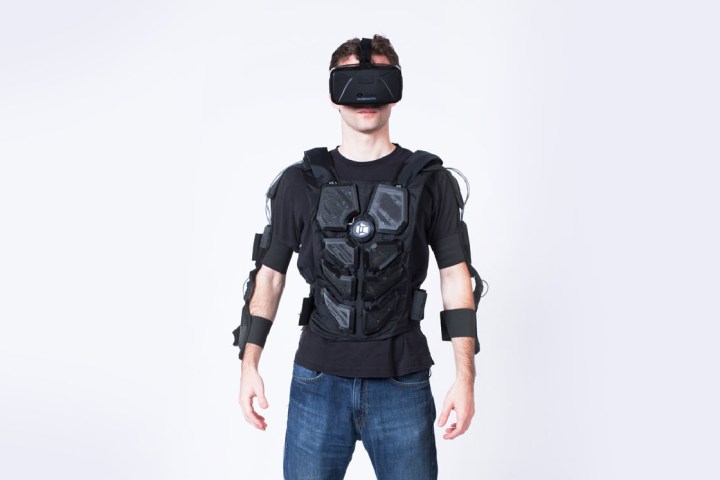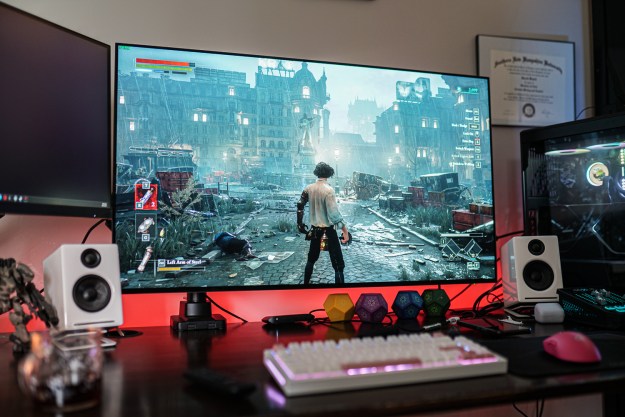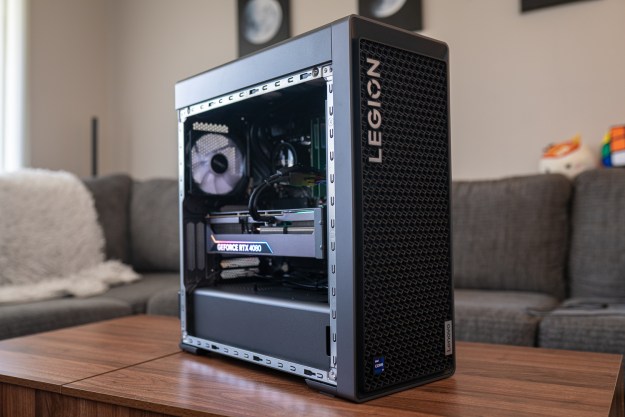
The 3D printed protoypes seen on the Nullspace VR site have come a long way from what one of the creators, Lucian Copeland, describes as “a bunch of students with overloaded course, putting together suits made of duct tape and plywood…spending hours trying to make it work by reaching out and touching a virtual box.”
In fact, in just two years the project has gone from pipe dream to reality, and now Nullspace VR is planning to launch the first developer kits to partners in January of 2016. The new kit is more like a suit of high-tech armor than some of the other options out there, and covers both the hands and the body. It does so naturally, without stripping down to spandex or coating your skin in gel.
“As far as our suit goes, you just put it on over what you’re wearing.” Copeland continues, “It looks cool, like a piece of armor — we want people to feel empowered wearing it, not embarrassed.” If they succeed in doing so, it will be the least embarrassing aspect of VR gaming, as anyone whose been around people wearing a headset can tell you.
Nullspace VR isn’t the only group on the block working on this type of project, but their trajectory as a concept has a bit more longevity than some of the other options, which err closer to proof of concept.
Editors' Recommendations
- This new VR headset beats the Vision Pro in one key way and is half the price
- Your Quest 3 just got so much better — for free
- 4 CPUs you should buy instead of the AMD Ryzen 7 5800X3D
- 5 GPUs you should buy instead of the RTX 4070
- These are all the must-try apps for your Meta Quest 3



